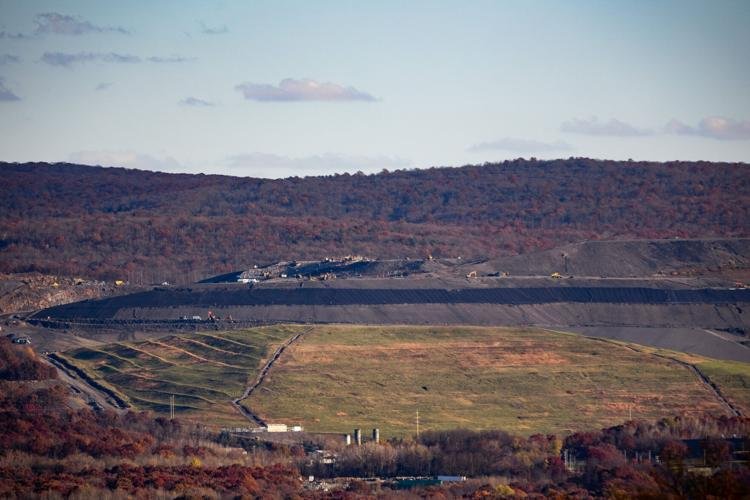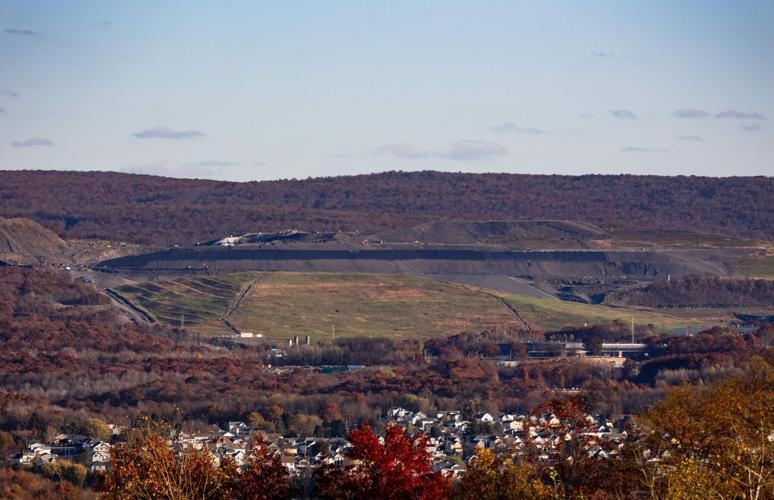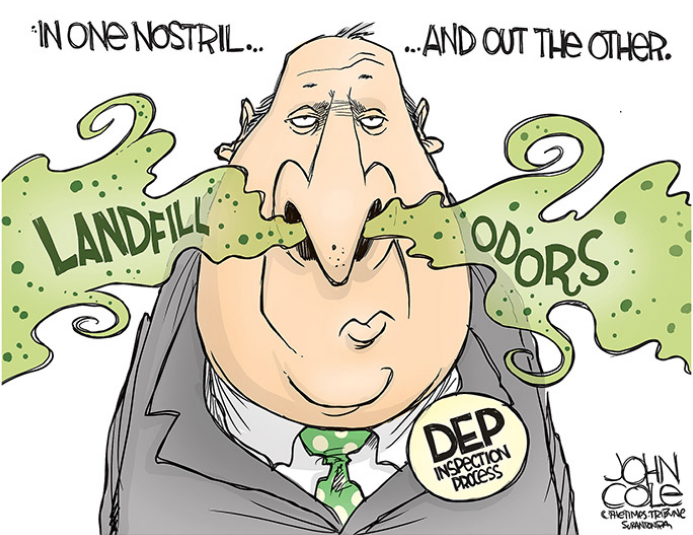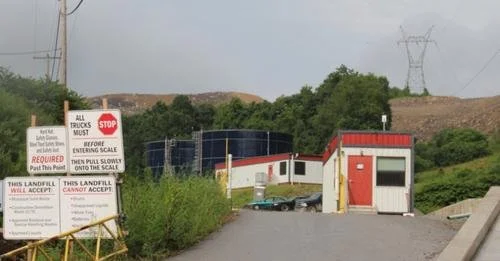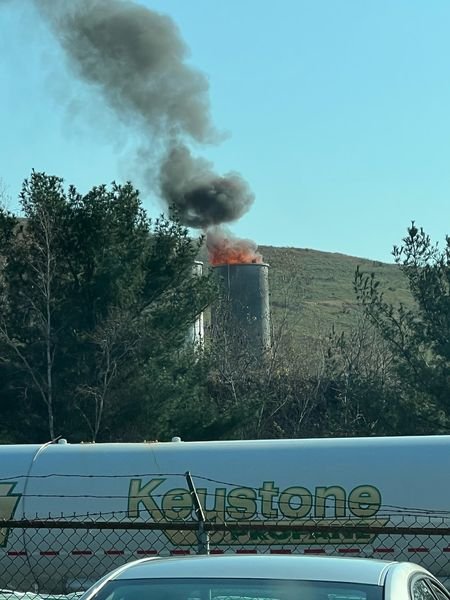FOL does not endorse political candidates but we do help keep the public informed on where your local candidates stand on important issues. See below for the positions of candidates running for Dunmore Council and their answers to questions regarding the landfill.
https://www.thetimes-tribune.com/.../article_545e45fe...
VINCE AMICO
Party: Democratic
Age: 50
Family: Wife, Celia; children, Grace, Olivia and Celia
Education: Bachelor’s degree, exercise physiology, Pennsylvania State University; state teaching certificate, technology education
Experience: Teacher, technology education, Scranton School District; small-business owner; Army veteran, Operation Iraqi Freedom; Dunmore council, 2015 to present; board member, Friends of Lackawanna; former vice president, Dunmore Missy League
Campaign website: N/A
What is the most important issue facing Dunmore and what will you do about it?
"It is tough to name the single most important issue that is facing the borough. Dunmore, as well as the other communities in Northeastern PA, are saddled with the Phase III Expansion of the Keystone Sanitary Landfill. The Pennsylvania Department of Environmental Protection has granted the expansion of the landfill. It is council's responsibility to be the voice for our residents and to keep DEP aware of issues that arise from Keystone. Dunmore also faces many of the same issues that other municipalities have to deal with — increased costs of goods and services, rising health care costs, aging infrastructure, blighted properties and absentee landlords. We are in the process of updating and modernizing all of our ordinances and working with code enforcement to address problems as they arise. Since being elected council president last year, my main focus has been dealing with the day-to-day issues that arise in the borough. If elected on May 16, I would continue to do my best to help move the borough in a forward direction."
Should Dunmore heed Pennsylvania Economy League's recommendation to consider becoming home rule to lift some taxing caps, like earned income tax?
"Borough Council just received the Pennsylvania Economy League's recommendations in March. We have not yet discussed all of their recommendations, and the topic of home rule has not been considered."
Do you agree with Keystone Sanitary Landfill that it was not the source of most odor complaints that prompted the state to cite the landfill earlier this year?
"No, I do not agree with Keystone Sanitary Landfill. I firmly believe that they are the source of the odors that prompted the state to cite them earlier this year. The rotten egg odor that you smell while driving on the Casey Highway alongside the landfill is the same odor that residents in Dunmore and Throop have been experiencing at their homes. The Department of Environmental Protection's Notice of Violation referenced 233 odor complaints between Sept. 1 and Jan. 20. The residents of Dunmore and Throop and surrounding communities have been experiencing and complaining about strong hydrogen sulfide (rotten egg) smells for years and DEP has finally issued violations regarding these odors. The system that is now in place is that when there is a malodor occurrence, a resident calls the DEP and they send a representative to confirm the odor. This is very reactive. I would like to see a more proactive approach put into place. The state should fund the placement and monitoring of detectors that would be able to give real-time feedback of odor occurrences, and be able to determine the source of those odors."
Beth McDonald Zangardi
BETH McDONALD ZANGARDI
Party: Democratic
Age: 59
Family: Husband, Anthony
Education: Associate degree, paralegal studies, Luzerne County Community College, 2010
Experience: Administrative clerk, Lackawanna County district attorney’s office, 2001-11; customer service representative, County of Lackawanna Transit System, 2011 to present; member, Dunmore Planning Commission, 2009-19
Campaign website: N/A
What is the most important issue facing Dunmore and what will you do about it?
"While the Keystone Landfill expansion is a major problem for Dunmore and is huge problem to rectify, Dunmore cannot solve this problem alone. We need our PA government legislators to step in and help us. Dunmore is a small town. We don't have the financial resources to fight the landfill and unfortunately, we don't receive enough fees from the landfill. That being said, Dunmore has financial problems, many roads to be paved, too much blight and a community in need of progressive growth. All these issues are important to our Dunmore community."
Should Dunmore heed Pennsylvania Economy League's recommendation to consider becoming home rule to lift some taxing caps, like earned income tax?
"Regarding the PA Economy League recommendation to become Home Rule Charter, at this time I would not be in favor of it. This current council has quite a few plans in the works for Dunmore. I believe these plans would help Dunmore become a better, brighter community. I won't rule it out in the future, not at this time. In the future, if it is the best path for Dunmore, then I am for it. As a side note, the PA Economy League made quite a few recommendations that leaves many options for Dunmore's future."
Do you agree with Keystone Sanitary Landfill that it was not the source of most odor complaints that prompted the state to cite the landfill earlier this year?
"No, I do not agree with that claim. Of course the landfill is the source of the odors."
Michael Hayes
MICHAEL HAYES
Party: Democratic
Age: 43
Family: Wife, Virginia Capo Hayes; daughter, Bella
Education: North Pocono High School, 1997; bachelor's degree, political science, Pennsylvania State University, 2002
Experience: Co-owner, Nardozzi's Pizza; borough councilman, 2012-13 and 2018-19; Dunmore Zoning Board, six years
Campaign website: N/A
What is the most important issue facing Dunmore and what will you do about it?
"We have rising costs and we cannot continue to tax our residents into poverty. We need to utilize the 230 acres of Dunmore land in Dickson City as a renewable energy park that is funded by the federal and state grant programs and feeds energy into the power grid, generating revenue for the borough, and relieves the tax burden of our community. We also need a professional grant writer paid based on the money brought into the borough, and all Dunmore elected government officials should donate their salaries back to the borough until we balance our budget. With seven on council, controller, mayor, tax collector, that's roughly $40,000 per year and that's a good start."
Should Dunmore heed Pennsylvania Economy League's recommendation to consider becoming home rule to lift some taxing caps, like earned income tax?
"PEL made some recommendations that are just horrible. They recommend we eliminate the garbage and recycling and outsource it. I will never be for any plan that involves that. Making our residents pay per garbage bag every week is a slap in the face to everyone in this community and I won't let that happen on my watch. And no, most of our residents are hard-working people living paycheck to paycheck, we can not increase the taxes anymore."
Do you agree with Keystone Sanitary Landfill that it was not the source of most odor complaints that prompted the state to cite the landfill earlier this year?
"It would be a great idea to work with all the potential sources of the odor to mitigate it. Let's get KSL, the wastewater treatment plant and the solid waste transfer station to aggressively plant odor-eliminating vegetation that reduces and eliminates orders, like gardenia, peace lily and Italian jasmine. Let's also clean up the garbage juice that drips from the daily garbage trucks and runs down our streets and into our yards. We should have a cleaning truck following the garbage truck to eliminate that issue in town as well."
Janet Brier
JANET BRIER
Party: Democratic
Age: 69
Family: Husband, Tim Brier; three children; five grandchildren
Education: Graduate, Dunmore Central Catholic High School; bachelor's degree, Marywood College; Master of Public Health, Mailman School of Public Health at Columbia University; PA Licensed Certified Public Accountant
Experience: Dunmore council member, 2020-present
Campaign website: facebook.com/JanetBrierForDunmoreCouncil
What is the most important issue facing Dunmore and what will you do about it?
"The most important issue facing Dunmore is the health and welfare of future generations of Dunmoreans. To that end, I will bring fiscal responsibility to revenue capture and sensible expenditures and work with state and federal officials, businesses, the chamber and citizens to promote sustainable economic growth. Most importantly, I will work to curtail further environmental exploitation of our beautiful little town."
Should Dunmore heed Pennsylvania Economy League's recommendation to consider becoming home rule to lift some taxing caps, like earned income tax?
"Our borough manager is taking the lead to implement PEL's recommendations with the advice and consent of the mayor and borough council. The borough was not compelled to hire PEL. We felt the need to obtain municipal expertise to assess what had taken place in the past and have a viable plan for the future. We wanted to be proactive instead of reactive. We actually submitted a STMP grant application with the state to secure money to help to pay for the study. The borough was $18 million in debt when I took office and that was the most compelling reason to seek PEL's expertise."
Do you agree with Keystone Sanitary Landfill that it was not the source of most odor complaints that prompted the state to cite the landfill earlier this year?
"No, not for one second."
Michael A. Dempsey
MICHAEL A. DEMPSEY
Party: Democratic
Age: 42
Family: Wife, Caressa; sons, Michael Jr. and Luke
Education: Bachelor’s degree, political science, University of Pittsburgh, 2004; Juris Doctorate, Widener University School of Law, 2010
Experience: Trial attorney, Lenahan and Dempsey PC, 2010 to present; auditor, state auditor general’s office, 2005-2007; Dunmore council, 2014 to present
Campaign website: N/A
What is the most important issue facing Dunmore and what will you do about it?
"The most important issue facing Dunmore is our financial health. We are currently at the maximum tax rate under Borough Code. As such, we need to maximize our grants and state funding, while also looking for other additional revenue streams. We have already taken numerous proactive steps to secure our future financial health such as refinancing our debt to a 1.7% fixed rate, received over $500,000 in grants, contracted PEL to analyze our current and future financial condition and engaged experts on our pension and health plans. We should also explore hiring an experienced financial consultant to guide us through our finances. We want to be able to take some of the burden off the local taxpayers while maintaining all of our public services. In addition to the above, we need to continue to review and scrutinize all of our service contracts to make sure we are getting the lowest possible rates in all areas. Also, we own a very valuable piece of commercial land in Dickson City of which we should begin to explore our options of usage."
Should Dunmore heed Pennsylvania Economy League's recommendation to consider becoming home rule to lift some taxing caps, like earned income tax?
"It never hurts to explore different options that are available to us as a borough and weigh the pros and cons of such an endeavor. However, I believe if we continue what I discussed above and scrutinize every dollar we spend, I am confident that Home Rule will not be necessary."
Do you agree with Keystone Sanitary Landfill that it was not the source of most odor complaints that prompted the state to cite the landfill earlier this year?
"I disagree with KSL that it was not the source of the odor complaints. We have received hundreds of odor complaints over the years and especially this past year. Finally, the DEP issued proper citations and I am hopeful that KSL will rectify this ongoing issue."
Patrick "Nibs" Loughney
PATRICK 'NIBS' LOUGHNEY
Party: Democratic
Age: 63
Family: Wife, Donna; children, Mark, Sean, Patrick and Colleen; grandchildren, Rain, Kai, Quinn, Margot and Esther
Education: Dunmore High School, 1978
Experience: Retired; former borough mayor, 24 years; former councilman, six years
Campaign website: N/A
What is the most important issue facing Dunmore and what will you do about it?
"The most important issue is our financial situation. I have a couple things that I am planning on bringing up when I am elected. One would be the uncollected garbage fees from years past and some other delinquent taxes, business taxes, that were not collected in prior years."
Should Dunmore heed Pennsylvania Economy League's recommendation to consider becoming home rule to lift some taxing caps, like earned income tax?
"No. Flat-out no. PEL is just a recommending body. It's a for-profit organization. It's not a governmental agency. And they just recommend. Council has the final say."
Editor's note: PEL is a nonprofit organization.
Do you agree with Keystone Sanitary Landfill that it was not the source of most odor complaints that prompted the state to cite the landfill earlier this year?
"No, I don't agree with Keystone that it was not (the source of most odor complaints). I agree that it was contributing to the odors."




